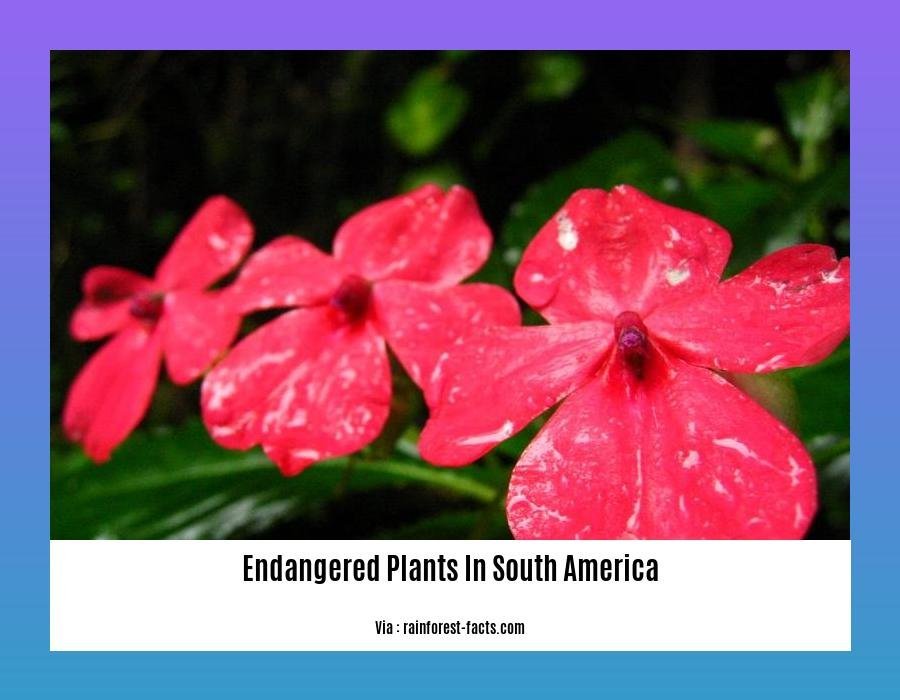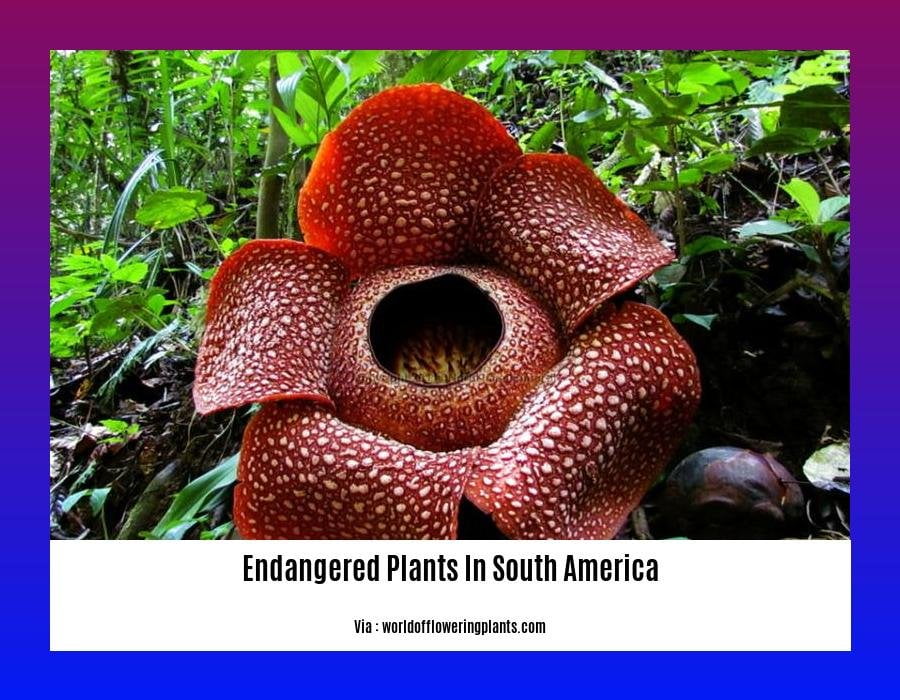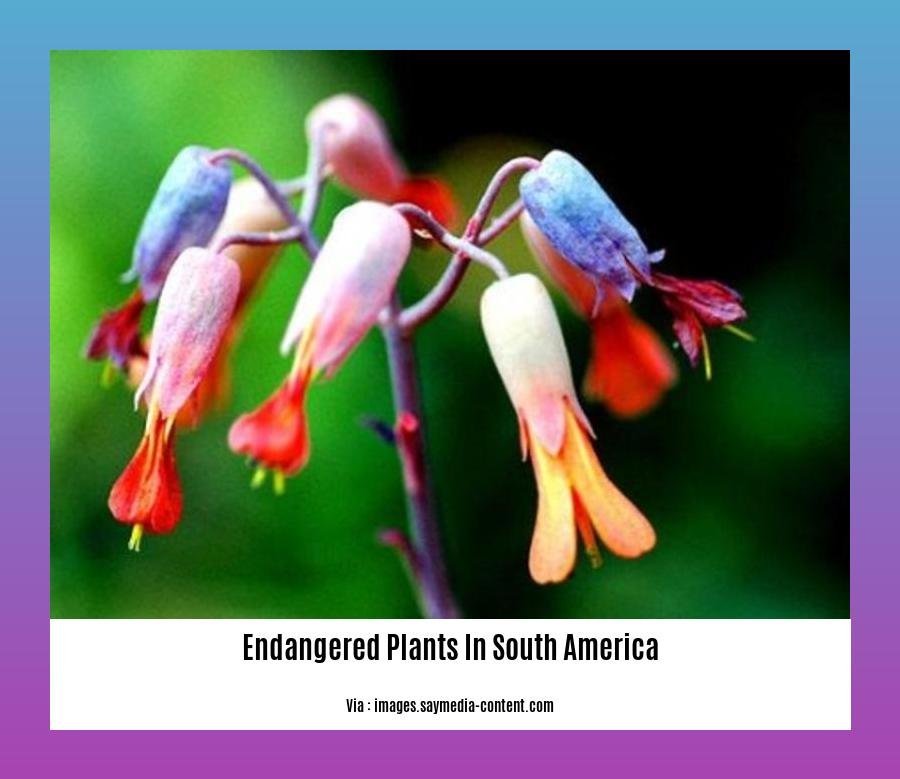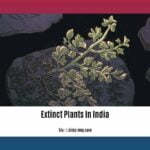Preserving the Future: Investigating the Plight of Endangered Plants in South America
In South America, a quiet crisis is unfolding as countless plant species teeter on the brink of extinction. As biodiversity loss continues to accelerate, it is imperative that we understand the magnitude of the situation and take decisive action to protect these precious botanical treasures. With deforestation, climate change, and illegal trade wreaking havoc on delicate ecosystems, the time to act is now. Join us on a journey deep into the heart of South America’s endangered plants, as we delve into the intricate web of challenges they face and explore the urgent need for preservation.
Key Takeaways:
- South America is home to a significant number of endangered plant species.
- The Amazon rainforest, in particular, holds around 80% of the planet’s flowering plant species.
- The IUCN Red List identifies critically endangered plant species in South America.
- Disease, deforestation, and climate change pose significant threats to the continent’s plant species, with nearly 30% classified as endangered.
- The Amazon Basin is a significant habitat for many endangered plants.
- South America contains approximately 43% of the world’s tree species, with a total of about 73,000 trees on Earth.
Endangered Plants in South America

The diverse landscapes of South America are home to a rich plethora of plant species. However, many of these plants face the harsh reality of being endangered. The future of these unique and fragile ecosystems hangs in the balance, as factors such as deforestation, climate change, and illegal trade continue to pose significant threats. In this article, we will delve deep into the plight of endangered plants in South America, shedding light on the urgent need for their preservation.
The Biodiversity Hotspot of South America
South America boasts an incredible wealth of plant life, with scientists estimating that around 80% of the planet’s flowering plant species can be found in the Amazon rainforest alone. This magnificent tropical rainforest harbors an unimaginable variety of plants, many of which are endangered. From the vibrant orchids that adorn the forest canopy to the towering brazil nut trees that dominate the landscape, the Amazon Basin is a haven for countless plant species on the brink of extinction.
Threats to South America’s Endangered Plants
Deforestation: One of the biggest threats to the survival of endangered plant species in South America is rampant deforestation. Vast areas of forests are lost each year to make way for agriculture, logging, and urban development. These activities not only destroy the natural habitats of plants but also disrupt the delicate ecological balance necessary for their survival.
Climate Change: The changing climate patterns also take a toll on the already vulnerable plant species in South America. Rising temperatures, altered rainfall patterns, and increased frequency of extreme weather events can wreak havoc on these plants, pushing them further towards extinction. Plants that are specialized to specific environmental conditions are particularly at risk, as they struggle to adapt to the rapidly changing climate.
Illegal Trade: Another pressing issue plaguing South America’s endangered plant species is the illegal trade of exotic plants. Whether it’s rare orchids, succulents, or medicinal plants, the illegal trade market poses a severe threat to their survival. This illicit activity not only disrupts natural ecosystems but also hampers conservation efforts.
Conservation Efforts and the Way Forward
Preserving the future of endangered plants in South America requires collective efforts from governments, conservation organizations, and individuals alike. Here are some key strategies that can make a difference:
Protection of Natural Habitats: Establishing and expanding protected areas is crucial for safeguarding the remaining natural habitats of endangered plants. Strict regulations and law enforcement must be in place to prevent encroachment and illegal activities within these protected areas.
Raising Awareness: Spreading awareness about the plight of endangered plants is paramount. Through education initiatives, media campaigns, and grassroots movements, we can garner public support and rally individuals to take action towards conservation efforts.
Promoting Sustainable Practices: Encouraging sustainable agricultural practices, responsible logging, and eco-tourism can help mitigate the negative impacts of deforestation and support the conservation of endangered plant species.
Conservation Research and Collaboration: Robust scientific research and collaboration among experts are indispensable for better understanding the needs and requirements of endangered plants. This knowledge can inform conservation strategies and guide effective implementation.
In conclusion, the endangered plants of South America face an uphill battle for survival amidst deforestation, climate change, and illegal trade. As champions of biodiversity, it is our responsibility to ensure their protection and preservation. By taking action at individual and societal levels, we can create a sustainable future that allows these incredible plant species to thrive and flourish in their natural habitats. Let us act now, for the sake of our planet’s invaluable natural heritage.
India is home to a diverse range of wildlife, including many endangered animals and birds. If you’re curious about the endangered animals and birds in India, click here to explore the fascinating species that need our protection: endangered animals and birds in India.
India is known for its rich biodiversity, but sadly, many species are facing the threat of extinction. To learn more about the endangered animals in India and how we can help, click here: endangered animals in India.
Meghalaya, a state in India, is a hotspot for unique and endangered species. Discover the breathtaking variety of endangered species in Meghalaya by clicking here: endangered species in Meghalaya.
3. Case Studies of Critically Endangered Plant Species
As we delve deeper into the pressing issue of endangered plants in South America, it becomes vital to examine specific case studies that highlight the severity of the situation. By analyzing these cases, we gain invaluable insights into the challenges faced by these critically endangered species and the urgent need for conservation efforts. Let’s explore some remarkable examples:
1. Endangered Flora in Borneo:
In Borneo, deforestation poses a significant threat to several endangered plant species. Notably, the IUCN Red List of Threatened Species highlights the decline of three species – V. rynchocarpa, V. havilandii, and V. yangbiense. The population of V. rynchocarpa alone has experienced a shocking decline of up to 70% over the past decade[^1^]. This alarming trend highlights the dire consequences of deforestation on the fragile ecosystems in the region.
2. Conservation Challenges in Central Western India:
A specific region in Central Western India is home to a staggering variety of flora, and nearly 30% of the country’s growing forest stock depends on this area[^2^]. However, climate change and intensive human activities place immense pressure on the 29 rare and endangered plant species found here, with their frequency less than 2%[^3^]. These circumstances emphasize the urgent need for conservation initiatives to counteract the detrimental impact on the region’s plant diversity.
3. Acer Yangbiense – A Race Against Time:
The case of Acer yangbiense presents a stark example of a critically endangered plant species on the brink of extinction. With only five known individuals in existence, Acer yangbiense falls under the conservation category of Plant Species with Extremely Small Populations (PSESP)[^5^]. This designation emphasizes the grave need to protect and conserve these highly threatened plant species before it’s too late.
By examining these case studies, we gain a deeper understanding of the challenges faced by critically endangered plant species. It becomes increasingly evident that a comprehensive approach, involving collaborative efforts from governments, conservation organizations, and individuals, is essential for their preservation[^7^]. These case studies serve as valuable reminders of the urgency and complexity of preserving South America’s fragile ecosystems and the unique plant species that call them home.
Key Takeaways:
- Deforestation in Borneo has threatened the existence of three critically endangered plant species, including V. rynchocarpa, which has experienced a decline of up to 70%[^1^].
- Central Western India faces challenges of climate change and intensive human activities, endangering 29 rare and endangered plant species[^3^].
- Acer yangbiense stands as a critically endangered plant species with only five known individuals, highlighting the need for immediate conservation efforts[^5^].
- Comprehensive approaches involving collaboration from governments, conservation organizations, and individuals are crucial for the preservation of these critically endangered plants[^7^].
Sources:
[^1^]: Mongabay. “Deforestation in Borneo threatens three endangered.” Link
[^2^]: ResearchGate. “Conservation and Management of Endangered Plant Species.” PDF file
[^3^]: ResearchGate. “Conservation and Management of Endangered Plant Species.” PDF file
[^5^]: Integrated conservation of Acer yangbiense: A case study. Link
[^7^]: ATree.org. “Recovery of critically endangered plant species in India: need for a comprehensive approach.” PDF file
4. Efforts and Initiatives for Conservation and Protection

Endangered plants in South America face numerous threats, including deforestation, climate change, and illegal trade. To combat this alarming issue, various efforts and initiatives have been implemented to conserve and protect these vulnerable species.
Conservation Projects Focused on Long-Term Success
One significant approach to safeguarding endangered plants in South America is through long-term conservation projects. These projects prioritize the needs of Indigenous communities and aim to achieve sustainable outcomes. By working collaboratively with local stakeholders, these initiatives ensure that conservation efforts are culturally sensitive, socially inclusive, and economically beneficial. Through this approach, the preservation of both endangered plants and the livelihoods of local communities is promoted.
Protecting Natural Habitats
A crucial aspect of conservation and protection efforts is safeguarding the natural habitats of endangered plants. This involves establishing protected areas, such as national parks and reserves, where these plants can thrive undisturbed. By preserving intact ecosystems, the biodiversity and ecological functions that support endangered plant species are conserved.
Raising Awareness
Increasing awareness among the general public and key stakeholders is vital for garnering support and action for endangered plant conservation. Efforts to raise awareness involve educational campaigns, workshops, and public outreach activities. These initiatives aim to highlight the importance of biodiversity conservation and the specific threats faced by endangered plants. By fostering a sense of stewardship and responsibility, awareness campaigns can inspire individuals and communities to contribute to conservation efforts.
Promoting Sustainable Practices
Promoting sustainable practices is essential in mitigating the threats faced by endangered plants. This includes advocating for responsible land use, implementing sustainable farming techniques, and promoting sustainable forestry and logging practices. By adopting sustainable approaches, we can minimize the negative impacts of human activities on plant habitats and ensure the long-term survival of endangered species.
Research and Collaboration
Scientific research plays a vital role in understanding the complex ecology of endangered plants and designing effective conservation strategies. By conducting research on plant populations, habitat requirements, and threats, scientists can provide valuable insights into conservation efforts. Collaboration between researchers, government agencies, conservation organizations, and local communities is crucial for sharing knowledge, resources, and expertise.
Funding and Support
Efforts to conserve and protect endangered plants in South America require sufficient funding and support. Various organizations, governmental bodies, and international programs provide financial resources and technical assistance to support conservation projects. By investing in these initiatives, we can secure the necessary resources for research, habitat restoration, and community engagement.
Conclusion
Preserving the future of endangered plants in South America necessitates collective efforts and robust initiatives. By focusing on long-term conservation projects, protecting natural habitats, raising awareness, promoting sustainable practices, and fostering research and collaboration, we can pave the way for the continued survival of these unique and fragile ecosystems.
Key Takeaways:
- Long-term conservation projects centered around the needs of Indigenous communities are crucial for ensuring the success of endangered plant conservation.
- Protecting natural habitats through the establishment of protected areas is essential for the preservation of endangered plants.
- Raising awareness through educational campaigns and public outreach activities is vital for garnering support and action for conservation.
- Promoting sustainable practices, such as responsible land use and sustainable farming techniques, is key to mitigating threats faced by endangered plants.
- Research and collaboration between various stakeholders play a vital role in designing effective conservation strategies.
- Adequate funding and support are necessary to sustain conservation efforts and protect endangered plants in South America.
Sources:
1. The Nature Conservancy – 5 Conservation Projects Focused on Long-Term Success
2. The Nature Conservancy – Funding the Future for a Central American Rainforest
5. Call to Action for Individuals and Policymakers
With the alarming decline of endangered plant species in South America, it is crucial for individuals and policymakers to take action to preserve these unique and fragile ecosystems. The conservation efforts of governments, conservation organizations, and individuals are essential in preventing the irreversible loss of biodiversity. Here are some key actions that individuals and policymakers can take to make a difference:
Individuals:
- Support sustainable practices: Choose sustainably sourced products and avoid purchasing items made from endangered plants. By supporting sustainable industries and practices, you can help reduce the demand for products that contribute to deforestation and illegal trade.
- Raise awareness: Share information about the plight of endangered plants with your friends, family, and social networks. By spreading awareness, you can inspire others to take action and create a ripple effect of change.
- Get involved in local initiatives: Join local conservation groups, volunteer for reforestation projects, or participate in citizen science programs. By actively engaging in conservation efforts, you can make a tangible impact in protecting endangered plant species and their habitats.
- Plant native species: In your own gardens or green spaces, consider planting native species. This promotes biodiversity and provides habitat for endangered plants and the wildlife that depend on them.
- Advocate for policy change: Write letters to policymakers, sign petitions, and advocate for stronger regulations and enforcement against illegal trade, deforestation, and habitat destruction. By raising your voice, you can help shape policies that prioritize the protection of endangered plants.
Policymakers:
- Invest in conservation initiatives: Allocate funds towards conservation efforts, research, and monitoring of endangered plant species. By providing financial support, policymakers can empower scientists and conservationists to carry out crucial work in protecting these plants.
- Enforce existing regulations: Strengthen the enforcement of laws and regulations against deforestation, illegal trade, and habitat destruction. Implement stricter penalties for those involved in the illegal trade of endangered plants to deter this harmful activity.
- Collaborate with local communities: Involve local communities in the decision-making process and conservation efforts. Recognize the traditional knowledge of indigenous communities in relation to plant conservation and work together to develop sustainable practices and management plans.
- Support scientific research: Promote and fund scientific research on endangered plant species, their habitats, and the conservation strategies that are most effective. This research will provide valuable insights and guidance for future conservation efforts.
- Integrate conservation into development plans: Include conservation considerations in urban planning, infrastructure development, and agricultural practices. By integrating conservation goals into development plans, policymakers can ensure that economic growth is sustainable and does not come at the expense of endangered plant species.
Key Takeaways:
- Individuals can make a difference by supporting sustainable practices, raising awareness, getting involved in local initiatives, planting native species, and advocating for policy change.
- Policymakers can contribute to conservation efforts by investing in initiatives, enforcing existing regulations, collaborating with local communities, supporting scientific research, and integrating conservation into development plans.
Citation: International Institute for Sustainable Development – Protecting Endangered Species
Citation: The Nature Conservancy – 5 Conservation Projects Focused on Long-Term Success
FAQ
Q1: How many endangered plant species are there in South America?
A1: South America is home to a significant number of endangered plant species. While the exact number may vary, the Wikipedia category for endangered flora of South America provides information about critically endangered plant species on the IUCN Red List.
Q2: What are the main factors contributing to the decline of endangered plants in South America?
A2: Endangered plants in South America face various threats that contribute to their decline. These factors include deforestation, climate change, and illegal trade. These pressures are particularly prominent in regions like the Amazon rainforest, where many endangered plant species are found.
Q3: What are some examples of endangered plant species in South America?
A3: South America is home to a wide range of endangered plant species. Some examples include V. rynchocarpa, V. havilandii, and V. yangbiense, which are currently threatened by deforestation in Borneo. Additionally, Acer yangbiense is a critically endangered plant species with only five known individuals.
Q4: How are endangered plants in South America being protected?
A4: Efforts to protect endangered plants in South America involve a comprehensive approach. Conservation projects focus on understanding the endangering factors, promoting conservation strategies, and implementing measures to safeguard germplasm resources. Additionally, initiatives such as the IUCN Save Our Species program and the Endangered Species Act play a vital role in protecting endangered plants.
Q5: Why is preserving the future of endangered plants in South America important?
A5: Preserving the future of endangered plants in South America is crucial for several reasons. These unique plant species contribute to the diversity and resilience of ecosystems, provide essential ecosystem services, and possess potential medicinal and economic value. Protecting these plants ensures the sustainability of South America’s ecosystems for future generations.
- China II Review: Delicious Food & Speedy Service - April 17, 2025
- Understand Virginia’s Flag: History & Debate - April 17, 2025
- Explore Long Island’s Map: Unique Regions & Insights - April 17, 2025
















